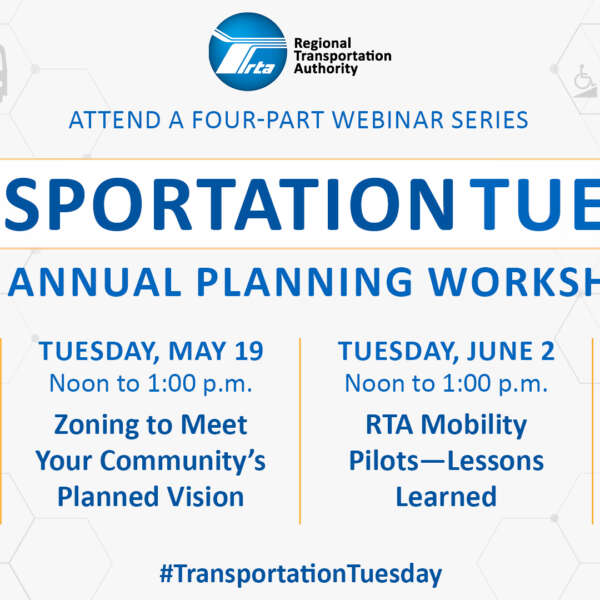Capital Funding Critical for RTA Region: Honolulu Seems to be On Track
September 19, 2016
September 19, 2016

By Karin Allen, Principal Analyst, Capital Programming & Performance Analysis, RTA
If you had to guess which transit agency in the U.S. spent the most money on transit capital projects per resident in 2014, which would you guess? New York? Los Angeles? Chicago?
Keep guessing.
On a per-resident basis, the Honolulu Department of Transportation Services spent over $425 per resident, versus about $60 at CTA, $29 at Metra, and $8 at Pace.What gives, you might ask? Well, Honolulu is in the process of building a 20-mile elevated light rail system on the island of Oahu that will serve 21 stations with 80 transit vehicles. The project is estimated to eventually cost about $6.7 billion. Yep, billion with a “B”. Building new rail lines and stations costs a LOT of money. But, so does maintaining what you’ve already got.
Something to consider: on August 25, the RTA Board adopted the preliminary capital program funding levels for CTA, Metra, and Pace, covering the five years 2017-2021. The capital budget, which pays for the cool stuff customers want (like new rail cars and buses) also has to pay for stuff that customers don’t generally think about (like system and bridge maintenance). And there’s only so much money to go around. For the next five years, the RTA is projecting that we will have $3.4 billion available, to be shared among CTA, Metra, and Pace. That’s about $680 million a year, coming from mostly federal funding. In the midst of the Illinois state budget difficulties, there has been no new State capital investment program for transit.
A State of Good Repair (SGR) will be achieved when our system’s assets are replaced at the end of their useful life, when all necessary rehabilitation has been performed, and when capital maintenance is up to date. We estimate that it would require an annual investment of $2.6 billion to achieve this standard, over a 20-year period. So, as you can see, that $680 million that we’re projecting isn’t even a quarter of what we need.
You might think $2.6 billion a year for 20 years sounds enormous. It is. The fact is, the RTA region has a lot of transit service already and we need to keep it in good working order. Between the three service agencies, there are over 7,500 vehicles serving riders: about 1,800 CTA buses, 1,500 CTA trains, 1,300 Metra train cars, 750 Pace buses, 840 vanpool vans, and 1,200 paratransit vehicles. Aside from the vehicles that we ride to get from here to there, there are stations (did you know Metra, with 241 stations, has the most of any commuter rail service in the US?), maintenance facilities, switches, signals, radios, etc. The list of transit assets goes on and on and on. Every year that our capital program is underfunded adds projects to our ‘to-do’ list and keeps us from attaining that system-wide State of Good Repair which we are trying to achieve.
We have a lot to be proud of in our region. We invest our resources wisely. In 2014, for the 4th year in a row, our region came in first place for having the lowest operating cost per passenger mile, compared to other major cities in the U.S.
Our transit system is a magnet that we have to maintain in order to attract residents and businesses. We need transit to keep getting us to work every day, to get our kids to school, and to reduce the congestion and pollution that come from having too many cars on the road. Capital funding is a key part of that, and the RTA is working to ensure that we have enough of it. Something to think about. We’ll keep you posted on what we’re doing to increase capital funding for our regional public transit system.
Subscribe to our Newsletter
Related Articles
 RTA celebrates 30 years of the Americans with Disabilities Act
RTA celebrates 30 years of the Americans with Disabilities Act
This month the RTA is celebrating the 30th anniversary of the Americans with Disabilities Act (ADA). The ADA transformed society and provided opportunities f...
July 29, 2020 Take a survey to help improve mobility options for older adults and people with disabilities
Take a survey to help improve mobility options for older adults and people with disabilities
Do you or someone you know face transportation challenges? The Regional Transportation Authority (RTA) wants to hear from you about transportation issues and...
May 7, 2020 Transportation Tuesday Webinar Series: Attend the 2020 RTA Annual Planning Workshop Virtually
Transportation Tuesday Webinar Series: Attend the 2020 RTA Annual Planning Workshop Virtually
The RTA is launching a four-part webinar series in place of the Annual Planning Workshop due to the ongoing COVID-19 pandemic. The free, virtual sessions wil...
April 17, 2020 Announcing the 2020 Access to Transit Program Call for Projects for Small-Scale Capital Projects
Announcing the 2020 Access to Transit Program Call for Projects for Small-Scale Capital Projects
We are excited to announce that the call for projects for the RTA Access to Transit Program is now open. The RTA launched the Access to Transit program in 2...
March 13, 2020 Happy International Women’s Day and Women’s History Month from the RTA
Happy International Women’s Day and Women’s History Month from the RTA
Each year the RTA celebrates Women’s History Month in March to recognize the women who work at, and ride, CTA, Metra, and Pace every day. The celebration coi...
March 8, 2020 How's Your Ride? Take This Survey
How's Your Ride? Take This Survey
We’d like to hear your thoughts about public transit! The RTA is sponsoring a system-wide customer satisfaction survey and would like your feedback about yo...
March 2, 2020